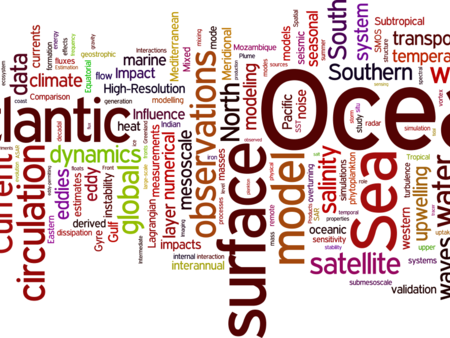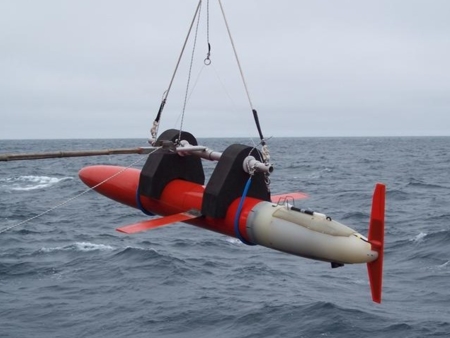ANR OLA project
Recent geoseismic observations have revealed the existence of thin quasi-horizontal layers in a number of oceanic regions, especially in the vicinity of meso-scale eddies such as Meddies. The typical thickness of these layers is of the order of 10-100m with horizontal extensions reaching length scales exceeding tens of kilometers. Such layers have been also observed in high resolution direct numerical simulations of meso-scale eddies. These structures are observed in an intermediate range of scales that are still not well understood. For larger scales, the combined effects of Earth rotation and stable stratification impose a 2D-like balanced dynamics (geostrophic turbulence). For smaller scales, these two effects are negligible and motions are nearly 3D isotropic. In the intermediate regime where the layering is observed, motions become 3D but are affected by both stratification and rotation, constraints that are still not well understood. The goal of this project is to understand this intermediate regime, its role in transferring energy to large and small scales and its energy dissipation. Overall, the aim of this project is to determine whether the 'layering' is the physical manifestation of an interior route (far away from boundaries) to dissipation of the energy injected at the planetary scales in the Ocean.
Comparison of the importance of such a route with other alternative possibilities will be worked out: the inertia-gravity route involving the scattering of inertia-gravity waves and the frictional dissipative bottom and coastal boundary route. The long term evolution of the ocean, relevant for climate predictions, critically depends on the dominant energy dissipation mechanism. This multidisciplinary project brings together researchers from four laboratories: LPO, LADHYX, LEGI and
IRPHE, who works on the same scientific question but from two complementary perspectives: physical oceanography and fluid mechanics. The dynamics of the ocean over a large scale range will be investigated by the LPO by means of geosismic and hydrographic measurements combined with gliders and high resolution numerical simulations using the massively parallel 'Earth Simulator 2' computer in Japan. These simulations will be compared to large scale laboratory experiments on the new "Coriolis II" rotating platform at LEGI. The LadHyX and IRPHE have an expertise in stratified turbulence and layering mechanisms such as the zigzag instability or the radiative instability. These mechanisms will be further investigated in order to check their relevance for the layering phenomenon in oceanic eddies, turbulence and thermocline formation. The expertise of the fours partners cover the whole range of oceanic scales, from the mesoscales to the small 3D isotropic scales. This project should therefore provide a fundamental understanding of the energy cascade in the oceans and lead to new parameterizations of small-scale turbulence in oceanographic and atmospheric general circulation models and of its feedback on the large scale oceanic thermocline structure.







